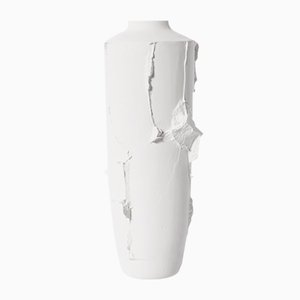Seven piping hot ceramics straight from the kiln
Crazing Ceramics
While attending my first-year design history lectures at university, I remember thinking that craft was quite charming but ultimately irrelevant. Under the sway of youthful folly and a painful lack of knowledge—in almost every regard—I had the impression that innovation entailed only looking forward. Then I received an insightful piece of advice from a drawing instructor: it’s easier to draw the right line if you don’t keep erasing the old ones. Applying this axiom across my understanding of good design, I've evolved. Today I’m a staunch advocate for preserving and rejuvenating material traditions, as I watch the current craft resurgence—most especially, in ceramics—with keen interest.
One of the characteristics of ceramics that I appreciate the most is gesture; that is, the discernible mark of the human hand or the handheld tool that becomes imprinted forever on the clay. I also love experimentation in ceramics and discovering all the novel ways that the makers challenge and reinvent centuries-old techniques that have been passed down through generations. Developed under ideal circumstances with time, patience, concentration, and commitment, these two elements—gesture and experimentation—imbue ceramics with a broader relevance that is anything but quaint.
Limoges Porcelain Vessels by Alice Reina for Bianco di China
Italian architect-ceramicist Alice Reina, working under her label Bianco di China , creates what can best be described as "living ceramics," with an emphasis on strong organic references. It’s probably her background in architecture, abetted by her innate curiosity, that has led her to become such an accomplished, self-taught ceramicist. Her pieces are created with such a lightness that they look as if they might ruffle in a breeze. They’re like fragments from a fantastical landscape or a memory of an ancient fossil
Porcelain Vessels by Anna Diekmann
Pamono loves Anna Diekmann ! After studying in Berlin, Potsdam, and Milan, Anna settled in Berlin, where she's been handcrafting enchanting porcelain and metal vessels in a delicious palette of colors. Her fascination with natural processes and "imperfections" inspire her to invest a lot time in intense research and experimentation—and it shows! Her wine carafes look like someone blew smoke over the surface and the pattern stuck. The patina of the metal elements evokes renderings of the universe.
Fine Bone China Stoneware Nesting Bowls by Manos Kalamenios for Made by Manos
A celebration of material properties is at the core of RCA-alum, London-based Manos Kalamenios's practice. Through dedicated experimentation, Kalamenios had designed a new process that combines metals with fine bone china in a kind of alchemy. His pieces are so thin, so translucent, they immediately signal that they are meant to be delicately held and treasured.
Ladder to Cloud Meteoroid by Tessa Eastman
London-based ceramics artist Tessa Eastman used white and black high-firing clays to hand build a rising mesh that supports a voluminous frothing cloud, suggesting a relationship in both harmony and tension. The intense glazes offer a sensuous physicality. I could look at this sculpture all day everyday.
Small Qumran Porcelain Vase by Aya Zehavi
Berlin-based ceramicist Aya Zehavi's Qumran Vase series, made from porcelain in a casting technique, have an archeological quality. The mold is broken and rebuilt, just like an ancient vase that has been rediscovered piece by piece. As the vase is removed from the cracked mold the "findings" are unveiled.
Ceramic Vessels by Annalea Clelia Tunesi
Annalea Clelia Tunesi is an Italian ceramicist based in London who find inspiration in subjects as far-flung as Freudian psychoanalysis and botany. The expressive and emotive gestures captured in her intensely wrought vessels are meant to capture the universality of suffering and the human link to earth and nature—with an appearance that seems to be in a state of growth or evolution.
Arena Collection by Martin and Charlotte for Biscuit
Brussels-based Biscuit is a dream conjured up at school between ceramicist Charlotte and industrial designer Martin. The marriage of these two professional approaches engenders a new way of defining craftsmanship today. Instead of thinking of artisanal practice as anomalous or anachronistic to the increasingly digital world, Biscuit integrates digital tools into their hands-on processes. Their chicly rustic but also precisely formed Arena Collection is created in enamelled stoneware using CNC-milled molds.
*All images courtesy of the designers
-
Text by
-
Emma Lucek
A British-born Pole currently based in Berlin, Emma has a background in research and design. In addition to being Pamono's Design Editor, lately she's been working on critical writing in the fields of art, architecture, and cultural theory, as well as design journalism.
-
More to Love
Handcrafted Porcelain Jar with Brass Lid by Anna Diekmann

Large Porcelain Vase by Aya Zehavi
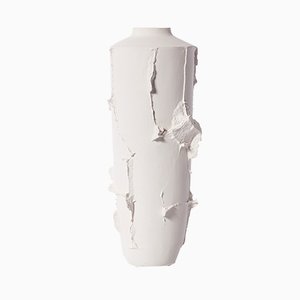
Small Royal Foil Candleholder by Aya Zehavi
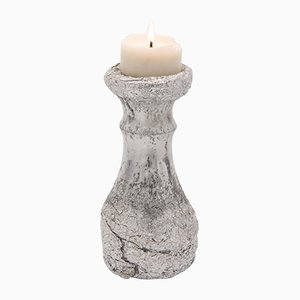
Large Royal Foil Candleholder by Aya Zehavi

Blue Ghost Bowl by AnnaLeaClelia Tunesi

Arena Collection Cup by Martin and Charlotte for Biscuit
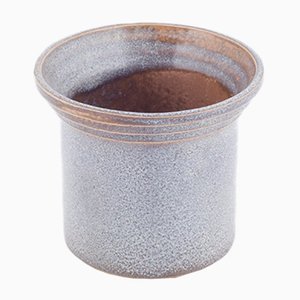
Arena Collection Bowl by Martin and Charlotte for Biscuit

Glossy Stone Vessel from AnnaLeaClelia Tunesi, 2017
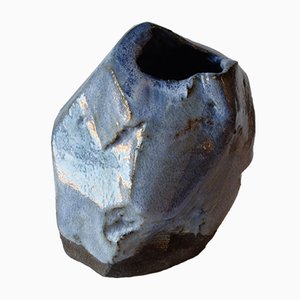
Stripy Jellyfish Sculpture by AnnaLeaClelia Tunesi
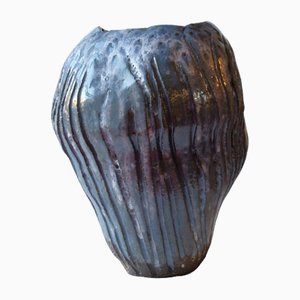
Small Qumran Porcelain Vase by Aya Zehavi
